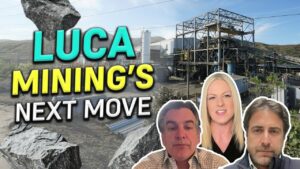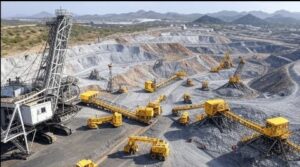Agnico-Eagle Mines Ltd., Canadas fifth-biggest gold producer, is outperforming global competitors including Barrick Gold Corp. after overcoming weather conditions at its Arctic mine that sent costs soaring.
Agnico has surged 37 percent in 2012, the biggest gain among 17 gold miners larger than $7 billion, according to data compiled by Bloomberg. The company beat earnings estimates for three straight quarters and now trades at a peer-leading price- to-earnings ratio of 32 times.
The companys performance is at odds with the rest of the gold industry. The S&P/TSX Global Gold Sector Index of 55 companies has slumped 19 percent this year while gold prices are up 6.7 percent in New York. Barrick and Newmont Mining Corp. are among miners saddled with cost inflation that outpaces the price of the metal.
The Toronto-based companys successes can be attributed partly to improved production and lowered costs at Meadowbank, Canadas most northerly gold mine. Output at the operation, now Agnicos top producer, reached a record in the third quarter, 42 percent higher than a year earlier, while costs fell 29 percent.
Dominique Girard, Meadowbanks general manager, said the company had to adapt to the challenges of Meadowbanks remoteness and climate.
On an early-September afternoon, 17 of the mines 21 haul trucks were available to carry waste rock and ore out of the pit.
That made it a good day, said Girard, sitting in a pick-up truck watching the mining vehicles crawl up and down the sides of the 2-kilometer (1.2-mile) long pit. Just 19 months earlier on an icy February morning, not one piece of loading equipment was ready for use.
It was a nightmare, Girard, 36, said in an interview. Everything was parked, everything was frozen. How do you produce when you dont have equipment?
The operation 70 kilometers from Baker Lake, Nunavut territory, which started production in 2010, relies on a 10-week shipping window for most supplies of food, equipment and materials before winter returns. That means that a small miscalculation or broken part can have massive consequences, Girard said. Equipment needs to be kept running year-round in temperatures that can drop to minus 50 degrees Celsius (minus 58 Fahrenheit).
After a review, managers drew up procedures that bar workers from loading equipment to full capacity when the temperature descends to minus 38 Celsius, Girard said.
Equipment breakdowns were a big problem in 2011, Agnico CEO Sean Boyd said in a telephone interview yesterday from Toronto.
We brought in new people and a new program on the maintenance side, Boyd said. As a result, we were able to move the waste we needed to move and we were also able to get the tons to the plant in volumes that were higher than what we had in our budget.
Meadowbanks operators also had to figure out why processed ore initially was lower grade than expected, inflating costs. By using cameras, they realized the blast holes used to extract rock were freezing and started to close up before they could be filled with the proper amount of explosives.
Agnico lost 52 percent of its value in 2011. A fire in March that year destroyed Meadowbanks kitchen facilities and helped lead to the company lowering its 2011 production forecast. In October of that year, Agnico said it would suspend output indefinitely at the Goldex mine in Quebec because of ground instability and flooding.
Given its gains this year, the company may have limited potential to rise further, with 17 of 25 analysts recommending investors hold the companys shares, versus seven buys.
I think that its up there as far as its value goes, David West, a Vancouver-based analyst at Salman Partners Inc., said by phone last week. Its at or very close to where it pretty much should be. West rates Agnico a hold.
Barrick, based in Toronto, is the top Canadian gold miner by trailing 12-month revenue, followed by Goldcorp Inc., Kinross Gold Corp. and Yamana Gold Inc.
Barricks earnings have missed analysts average estimates for four consecutive quarters and the company raised its forecast for total cash costs Nov. 1 to a range of $575 to $585 an ounce in 2012, up from $550 to $575 previously. Barrick also increased the cost forecast for Pascua-Lama, a mine its building in the Andes.
Newmont, the largest U.S. gold company, said the same day that attributable production in 2012 would be at the low end of its forecast of 5 million to 5.1 million ounces and that it expects gold costs per ounce will be at the high end of a narrower range of $650 to $675.
In comparison, Agnico raised its total production forecast twice this year, and in October lowered its 2012 cost projection to $660, from $690 previously.
Agnico has succeeded because it set targets it could achieve, while other producers have disappointed and been forced to cut forecasts, said Greg Orrell, president of Orrell Capital Management in Livermore, California, which manages about $200 million including Agnico shares.
They were ahead of the curve in terms of bringing their guidance down to the levels they could meet, Orrell said yesterday by phone.
Meadowbank produced 110,988 ounces of gold in the third quarter, at a per-ounce cost of $734. The costs, which improved from $1,033 a year earlier, still were higher than Agnicos average of $556 in the quarter.
Agnico operates mines in Canada, Finland and Mexico and announced Sept. 4 it approved construction at another operation in Mexicos Sonora state.
While Meadowbank will probably always be a relatively high- cost producer because of its location, Agnicos management has done well to improve operations, Maison Placements Ing said yesterday in a phone interview.
They looked at Meadowbank with different eyeglasses, from a different point of view, Ing said. Gold-mining steering is like moving a super tanker; they were able to do that in a few quarters, and to their credit have recaptured their premium.
















